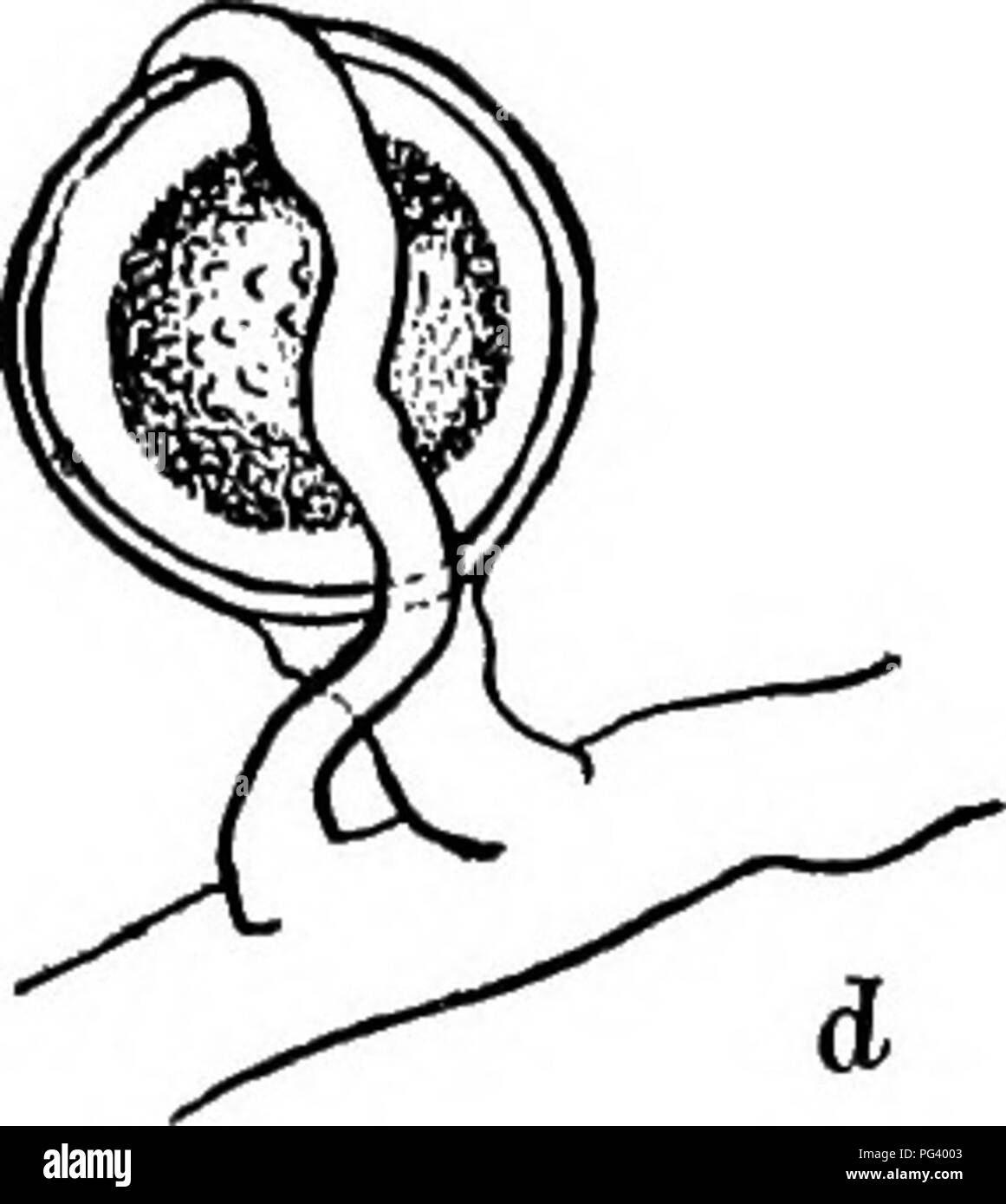. Fungous diseases of plants : with chapters on physiology, culture methods and technique . Fungi in agriculture. Fig. 53. Plasmopara on Grape, [b and d after Farlow) a, mycelium; b, mature conidiophore ; c and d, zoospore and oospore formation, respectively than two-thirds grown (see illustration facing page 1). Upon litis cordifolia the fungus may fruit so abundantly upon the young berries as to completely envelop them in a downy mass of sporophores. Under such circumstances the berry does not at that stage show evidences of decay, and it is only when the berries are older, and in other spec

Image details
Contributor:
Central Historic Books / Alamy Stock PhotoImage ID:
PG4003File size:
7.1 MB (159.8 KB Compressed download)Releases:
Model - no | Property - noDo I need a release?Dimensions:
1494 x 1672 px | 25.3 x 28.3 cm | 10 x 11.1 inches | 150dpiMore information:
This image is a public domain image, which means either that copyright has expired in the image or the copyright holder has waived their copyright. Alamy charges you a fee for access to the high resolution copy of the image.
This image could have imperfections as it’s either historical or reportage.
. Fungous diseases of plants : with chapters on physiology, culture methods and technique . Fungi in agriculture. Fig. 53. Plasmopara on Grape, [b and d after Farlow) a, mycelium; b, mature conidiophore ; c and d, zoospore and oospore formation, respectively than two-thirds grown (see illustration facing page 1). Upon litis cordifolia the fungus may fruit so abundantly upon the young berries as to completely envelop them in a downy mass of sporophores. Under such circumstances the berry does not at that stage show evidences of decay, and it is only when the berries are older, and in other species nearly full grown, that the fungus produces a true decay. When the disease occurs upon the young fruits the financial losses may be severe.. Please note that these images are extracted from scanned page images that may have been digitally enhanced for readability - coloration and appearance of these illustrations may not perfectly resemble the original work.. Duggar, Benjamin M. (Benjamin Minge), 1872-1956. Boston ; New York : Ginn